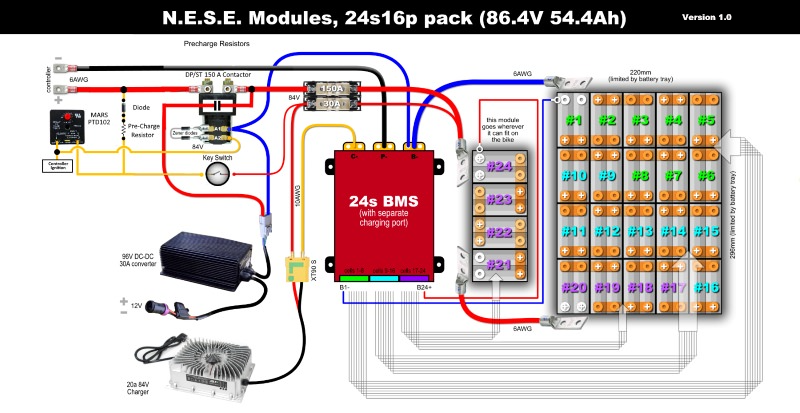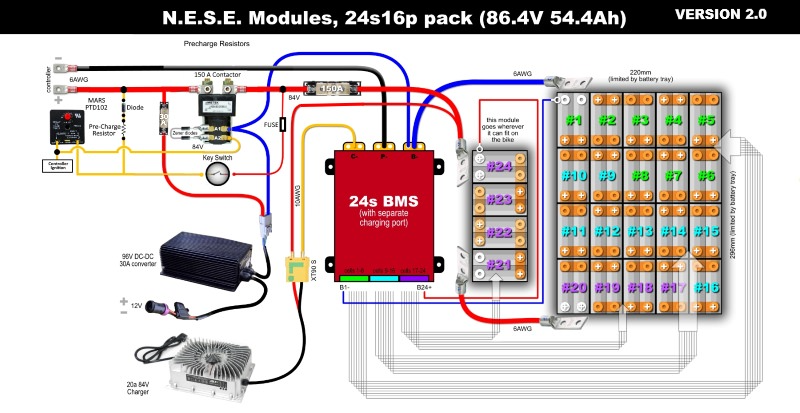MJSfoto1956
10 kW
So I'm getting closer to to finalizing the details of the upgrade of my 72V/2000W Chinese eMoped/eScooter.
The ultimate goal is to replace the 2000W QS 205 motor @ 72V with an 8000W QS 273 motor @ 84V. However, my first step will be to upgrade the controller, followed by the battery system, and lastly the motor. Currently I'm looking at building a 24s16p Li-ion pack made from 48 NESE 8p modules controlled by a 24s BMS. This gives me an 86.4V 54.4Ah system with a max charge of 98.6V.
While I don't "think" this particular electrical layout needs any diodes or resistors, I am putting it out there for the experts to weigh in. Any advice appreciated.

The ultimate goal is to replace the 2000W QS 205 motor @ 72V with an 8000W QS 273 motor @ 84V. However, my first step will be to upgrade the controller, followed by the battery system, and lastly the motor. Currently I'm looking at building a 24s16p Li-ion pack made from 48 NESE 8p modules controlled by a 24s BMS. This gives me an 86.4V 54.4Ah system with a max charge of 98.6V.
While I don't "think" this particular electrical layout needs any diodes or resistors, I am putting it out there for the experts to weigh in. Any advice appreciated.







